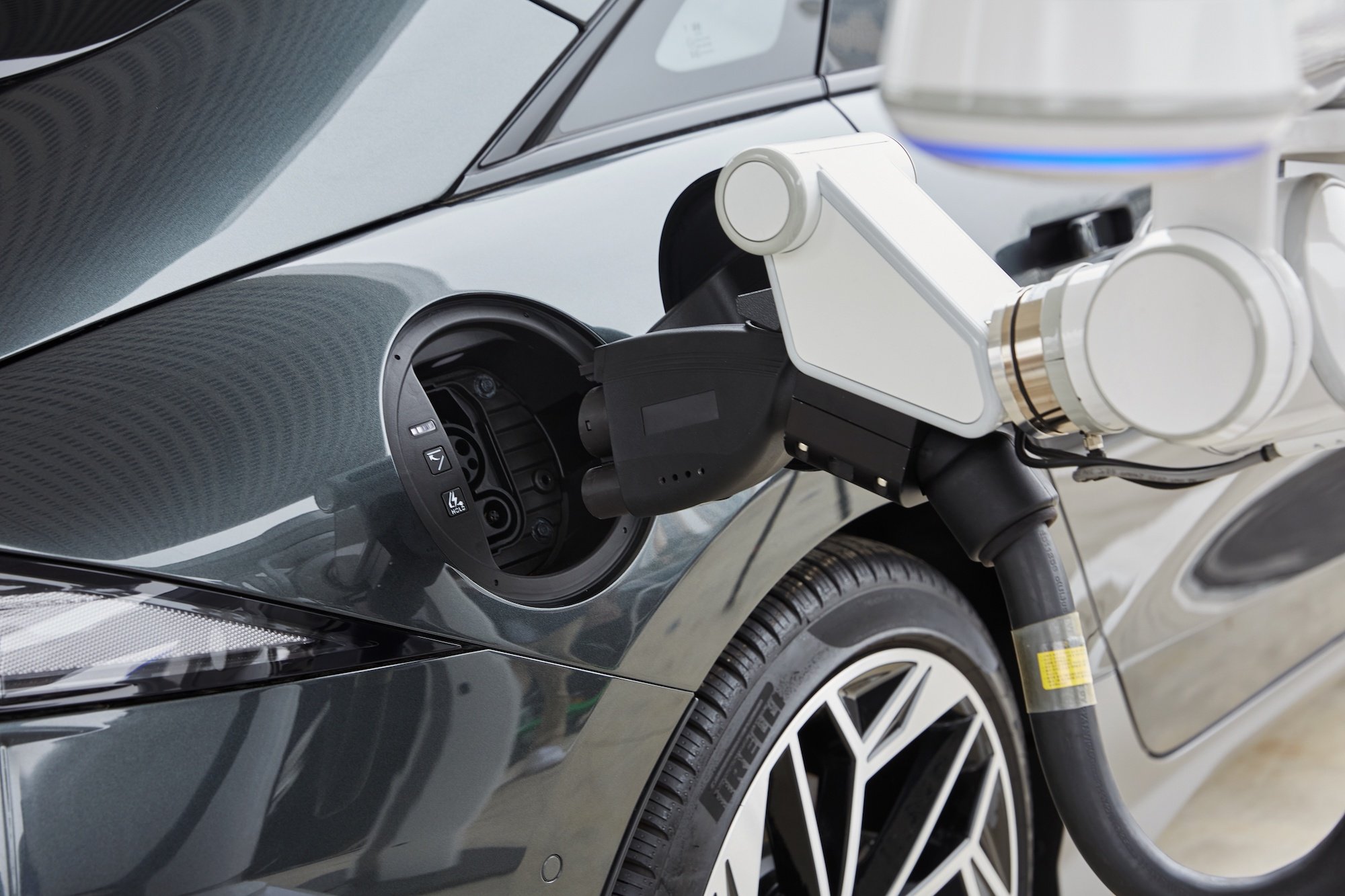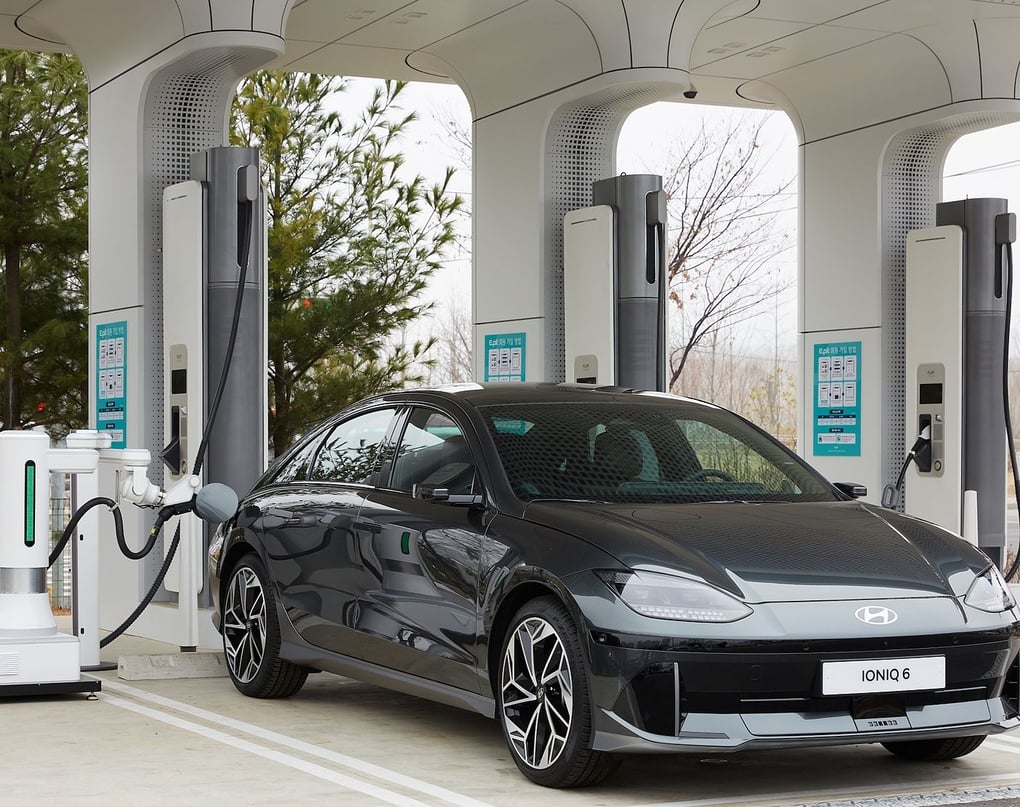Hyundai Motor Group (the Group) is turning to robots to charge electric vehicles (EVs). The automaker is debuting its automatic charging robot (ACR) for EVs. The one-arm robot can plug a cable into an EV’s charging port and then remove it again once charging is complete. You can see the robot in action in the video below.
The video demo features the new 2023 Hyundai IONIQ 6 sedan parked autonomously in an EV-charging bay. Once it's parked, the ACR communicates with the IONIQ 6 to open the charging port, calculating the exact location and angle through a camera mounted inside. The robot then picks up the charger and fastens it to the vehicle’s charging port, thus starting the charging session. Once charging is complete, the robot removes the charger, returns it to its rightful place, and closes the cover of the vehicle’s charging port.
“The ACR will help to make EV-charging easier and more convenient, especially in dark environments. It will also improve accessibility, particularly for people with mobility barriers, as charging cables become thicker and heavier to enable high-speed charging,” said Dong Jin Hyun, Head of Robotics Lab, Hyundai Motor Group. “We will continue developing the ACR for increased safety and more convenience, so that all EV customers can soon benefit from using it at charging stations.”
As you might imagine, a lot of technology went into making this happen. Hyundai says its Robotics Lab considered a lot of different variables during development, including the parking location of the vehicle, the shape of the charging port, the weather, potential obstacles and the charging cable's weight.
 Photo Credit: Hyundai Motor Group.
Photo Credit: Hyundai Motor Group.
In order for a robot to fasten a charger to the charging port securely, the development team also needed software technology that could simultaneously calculate these multiple variables. So the Group also developed an algorithm that applies 3D camera-based AI technology to robots. The automaker says the next-generation control technology based on this application allows robots to handle heavy chargers.
When it comes to location - Hyundai kept in mind that many chargers are located outdoors without cover. So engineers built a bespoke outdoor EV charging station at its R&D center where the could test and evaluate performance in various conditions. As a result, the ACR has secured a waterproof and dustproof grade of IP65, and its performance has been greatly improved so that it can be stably operated even in extreme environments. Engineers also installed a safety pole with a built-in laser sensor around the robot to prevent possible accidents by enabling it to detect stationary and moving obstacles.
The Group says goal of the ACR is to significantly increase convenience of EV charging and at some point could include charging more than one EV at once.
Hyundai isn't alone in its robotic charging efforts. Last year, we shared that Ford was testing a robotic EV charging station in Europe that is designed to help drivers with reduced mobility. The prototype is operated by drivers using their smartphone who can stay in the car or leave the car while the robot does all the work.
Photo Credit: Hyundai Motor Group.

